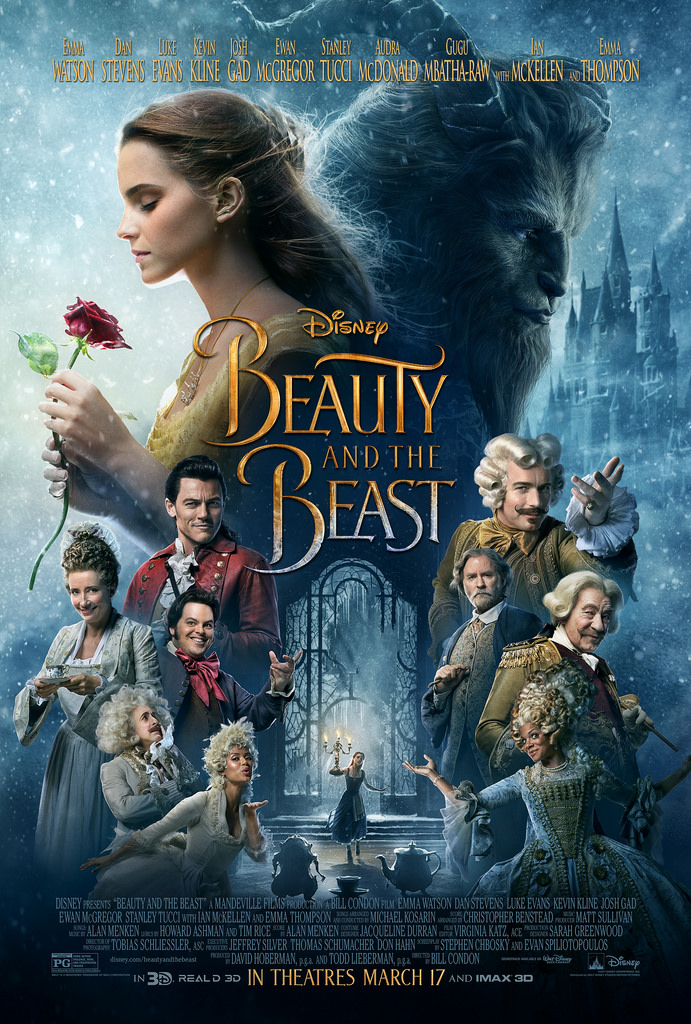“Beauty and the Beast,” Disney’s latest in a line of live-action reboots, broke box office records in its opening weekend with a combination of beautiful cinematography and a healthy dose of nostalgia.
The film, which now holds the record for the largest March opening and the largest PG rated movie opening, relied heavily on elements from the 1991 animated classic while adding a few new twists. The most notable difference when watching the movie is the extended length compared to the animated version, with an increase in runtime from 84 to 129 minutes. The added time caused the movie’s pacing to lag in some parts, like the fight sequence at the end, which dragged on for much longer than the original.
Some of the additional time came from the closing of several glaring plot holes from the original movie. Audiences find out what happened to Belle’s mother during a gloomy trip to Paris facilitated by a magic book. The timeline confusion from the previous movie is cleared up, removing the references to the Beast’s 21st birthday and the passage of ten years of time. The film also clarifies that not everything in the castle is alive, so the broken furniture in the west wing aren’t the bodies of servants the Beast has killed in his rage.
One change in plot caused outrage before the movie was released — having the first openly gay Disney character, LeFou. Howard Ashman, the lyricist of “Beauty and the Beast” as well as several other Disney movies, was openly gay. Ashman died from complications due to AIDS right before the release of the original animated version, so it’s fitting that one of his movies would have this distinction as a nod to his memory. Unfortunately, after all the hype and build-up, the end result fell flat. There were a few moments with Gaston and one in the final dance scene where he realizes he’s dancing with another man, but it felt forced and minimal at best. None of the scenes were much different than the original film, although it felt like a small step in the right direction.
Controversy aside, Josh Gad often stole the scene with his conflicted portrayal of LeFou. The rest of the cast is full of big names, most of who do an adequate job in their roles. Emma Watson plays a convincing Belle outside of her accent, which comes through more during her musical numbers. Her voice is not as strong as Disney’s original Belle, Paige O’Hara, but she holds her own, as does the rest of the star-studded cast until the final reprise of “Beauty and the Beast.” During the number, six-time Tony Award winner Audra McDonald blows the rest of the cast out of the water with a rendition more impressive than both Emma Thompson’s earlier in the film and John Legend and Ariana Grande’s for the film’s credits.
The music is kept mostly the same as the original animated version, including the familiar musical cues that induced heavy nostalgia. Four new songs were written for the movie instead of using the additional songs already written for the Broadway version of the show. The most notable of the new numbers is “Evermore,” which the Beast sings after sending Belle back to rescue her father. While the song is nice enough, and Dan Stevens does a decent job singing, it drags the pacing of the movie as he spends three minutes moving around the towers of the castle simply watching Belle ride away without moving the plot forward much.
During the ride away from the castle, Belle is still wearing her signature yellow ball gown. The design was changed slightly for the movie, but kept close to the original. The other costumes throughout the movie stayed relatively faithful with minor changes, including Belle’s blue dress and the Beast’s blue suit. The elaborate, period-appropriate clothing during the balls in the opening and closing scenes were visually stunning, and the costuming added a nice background element throughout the movie.
Overall, the movie was entertaining and nostalgic, making it easy to overlook the minor disappointments in what is turning out to be Disney’s most successful live-action reboot yet.







